Study in USA
USA, a highly developed country, is home to several of the world’s most exciting cities and mind-blowing landscapes with the most approachable natives in the world. One of the hallmarks of U.S. culture is independence. USA has a very advanced education system that varies greatly across the country. The United States attracts the largest number of international students, and rightly so.
Why USA?
The US, with 16 institutions, dominates the world’s top 20 universities list. 52 US universities are ranked among the top 100 universities worldwide 77 American universities are ranked among the best 200 universities in the world American Universities welcome international students who have met their selection criteria. American Universities are definitely melting pots of diverse cultures, with the spectrum spread over more than 60 countries. At present there are almost 10,00,000 international students studying in different universities in U.S apart from about 160,000 Indian students. American degrees are highly regarded world over and give a cutting edge advantage to an individual while applying for a job.
Climate varies considerably across the United States. You will probably need an umbrella, even in Las Vegas or Los Angeles. In the northern cities you will need cold weather and snow gear. In the southern states, summers may be very hot and the winters mild. Depending on the part of the country, temperatures during the summer will run from the 70’s through the 90’s.
Once you enrolled in the campus, there will be “The International Student Orientation Program,” coordinated by the Admissions Office or the Office of International Programs. Information on many topics like immigration, academic advisers, computer and library resources, telephone services, public safety, medical services, banking and transportation options will be provided through this program.
There are many transportation options for getting around in your new country. A bicycle or bike is affordable travel options for short distances. If you are living in a city, the bus system will likely be pretty extensive, as with most of the public transportation systems in large urban areas. Trains are good for traveling in the USA. They are slightly more expensive than traveling by bus, but it is much quicker. Taxis can be extremely expensive for students
EDUCATION SYSTEMS
USA has the world’s most flexible education system, students can study their area of interest as specialization. As the education system of USA is not centralized each institute can determine its program and admission standards. Lateral movement in the education system is possible any time. Some U.S. colleges and universities stress broad educational principles; others emphasize practical, employment-related skills; and still others specialize in the arts, social sciences or technical fields. American colleges and universities offer three basic programs:
- Associate’s Degree
- Diploma
- Undergraduate
- Masters
Cost of living & studying
The total annual expenses, i.e. fees, books, boarding and lodging will vary from $20,000 to $50,000 (Tk.16 to 40 lac) depending upon the universities. Majority of GEC students are placed in government supported universities that provide quality education, where the tuition fees are very nominal and applicants have high prospects of getting financial aids like tuition fee waivers, research/teaching/graduate assistant ships.
Having a bank account will be convenient for money transactions. Many college students appreciate the convenience of a MAC (Money Access Card) or ATM (Automatic Teller Machine) card. If you have an ATM card from a bank in your home country, ask whether the U.S. bank will honor it; some Personal Identification Numbers (PINs) cross national borders, while others do not. Credit cards and Debit cards are convenient payment options. They help to maintain good financial records and also serve to remind you of the money you spend.
ELIGIBILITY TEST REQUIREMENTS
US Universities normally do not accept 3 years’ Bachelors degree from Bangladesh like BA, B.Sc , B.Com for admission to their masters programs. Sixteen years of formal education or a four years’ Bachelors degree or Masters (MA/M. Com/MSC) with good grades (high first class or above) are the basic requirements for admission to MS programs & twelve years (HSC or Equivalent) for Bachelor’s programs in most US Universities. Apart from TOEFL (IELTS and PTE is also being accepted by many universities) students are also required to clear competitive exams like GRE/GMAT to secure admission and financial aid in good US Universities and also to secure visa without hassles.
TOEFL
TOEFL is Test of English as a Foreign Language. The test is conducted by ETS (Educational Testing Service) and the test fee is $170.The score is valid for 2 years and the score is sent to 4 universities by ETS free of cost at the time of exam. ETS charges additionally for scores sent to universities later. For more info visit the official website at www.toefl.org or www.ets.org.
GRE
GRE is Graduate Record Examinations and is administered by ETS (Educational Testing Service) The test is essential for candidates seeking admission in a Masters Degree program in fields other than management are required to take the GRE. Most Universities require GRE for PhD. programs. The score of GRE has been generally valid for 5 years and the score is sent to 4 universities free of cost at the time of GRE exam. ETS charges fees for scores sent to universities later.
GMAT
GMAT refers Graduate Management Admission Test which is administered by Graduate management Council (GMAC) The test is required for admission into a MBA Program. The test fee cost $250. The score is generally valid for 5 years and the score is sent to 5 universities by ETS free of cost at the time of exam. Students can register for the test by phone, fax or online and visit the official website at www.gmat.com for more info.
SAT
Scholastic Aptitude Test is referred as SAT. The test is administered by the College Board and is required for admission into any Bachelors Degree Program. SAT is administrated by the College Board and offered 7 times a year. The score is sent to four universities free of cost, which can be selected at any time of registering for the exam. College Board charges additional for the score to be sent to university later. For more info visit the official website www.collegeboard.com.
TSE
TSE is Test of Spoken English conducted by ETS (Educational Testing Service) The validity of the score is 2 years. The test has the duration of 20 minutes and TSE is conducted once in a month. The score in sent to 2 Universities by ETS free of cost. ETS charges additionally for scores sent to more than 2 Universities. For more info visit the official website atwww.toefl.org or www.ets.org.
Admission & Application Procedure
As majority of the US universities have earlier deadlines, it is highly recommended that You apply as early as possible. Applications can be initiated during final year/semester study of your course (students pursuing BSc/B.com can start applying as soon as you receive your S4/S5 mark lists and B.Tech students can start applying as soon as you get your s6 mark-lists. High school students (Higher secondary) can start applying with your 11th grades or projected grades of 12th).
Our experienced application team will advise you with all required formalities such as Letter of Recommendations or Statement of purpose etc. as per the university’s requirement to maximize the admission possibilities.
VISA Process
There are several immigrant and non-immigrant visa options at USA and one has to choose the one that is applicable according to the requirements. The passport must be valid for at least six months beyond the end of your intended stay in the US. Immigration regulations are very strict with respect to working while carrying a student visa. F-1 status, which is the most common status for full-time international students, allows for part time, on-campus employment (fewer than 20 hours per week.) J-1 student status allows for similar employment, with similar restrictions, as long as permission is given by the exchange visitor program sponsor. M-1 visa holders for technical and vocational programs are not permitted to work during the course of their studies.
To get the F-1 visa approved, the student will need to show that he/she has sufficient funds to pay for the first year of study and that you have resources available to cover the rest of your educational program. For an M-1 or J-1 visa, you will need to convince the authorities that you have sufficient funds to pay for all tuition and living costs for your complete stay in the US.
Requirements for Student Visa
A letter of acceptance on the course. This is the letter from your establishment confirming that an area has been offered to you which the course is full-time as outlined by the immigration law.
Evidence that you simply will pay the course fees and support yourself and your family, if applicable.The student should attend the Interview with the ECO, clarifying certain parts of your application.You must be ready to persuade him/her that your study plans are real and possible.
SCHOLARSHIPS
One of the most attractive aspects of US education is that majority of the students pursuing higher education in USA is successful in securing financial aids in the forms of research/graduate assistantships, tuition fee waivers, fellowships etc. There are several international organizations, such as the Fulbright Commission, who grant aid to students all over the world to Study in USA. Some of the organizations that offer aid are:
The United Nations
AMID-EAST
World Council of Churches
Sores Foundation
World Health Organization
Job opportunities
Students are permitted to work 20 hours per week on-campus during the first years of study. In the second year students are allowed to take part-time jobs or co-op/internships off campus to fulfill academic or financial requirements. The on campus jobs do not pay much and certainly not enough to finance a university education. This kind of jobs can only be a supplement to other funds.
Along with the acceptability and recognition of education, USA also offers the best in terms of future job prospects and immigration possibilities after studies. All students are entitled to stay back and work for one year period in USA under OPT (Optional Professional Training). For STEM Graduates (Science, Technology, Engineering and Mathematics) the OPT can be further extended to another 24 months (Total 36 Months). Students who are successful in finding a suitable placement can apply for H1B (Job Visa) during this period.
Exceptions to the general rule
- There are few universities which accept 3 year degree students for Masters programs like MBA, MSCS etc.
- There are number of programs and good universities in which you can get admission with your GRE/GMAT or SAT.
- There are ‘Pathway’ programs which give you conditional admissions to Tier 1 universities with comparatively low academics and test scores.





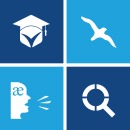
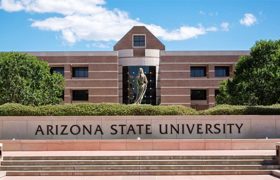
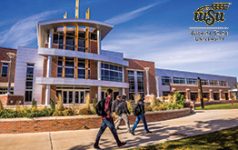
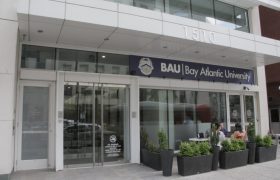
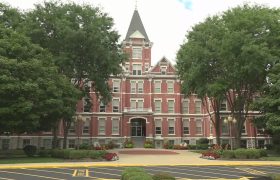
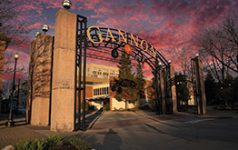


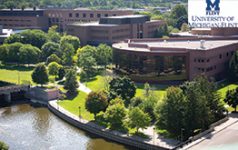
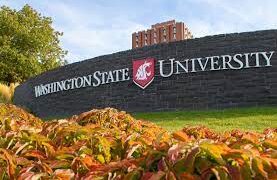
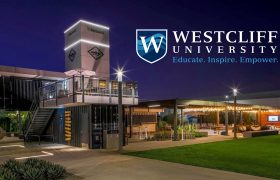
![151022_aerials-1205[1594740778] 151022_aerials-1205[1594740778]](https://shakiledu.org/wp-content/uploads/2022/06/151022_aerials-12051594740778-280x180.jpg)